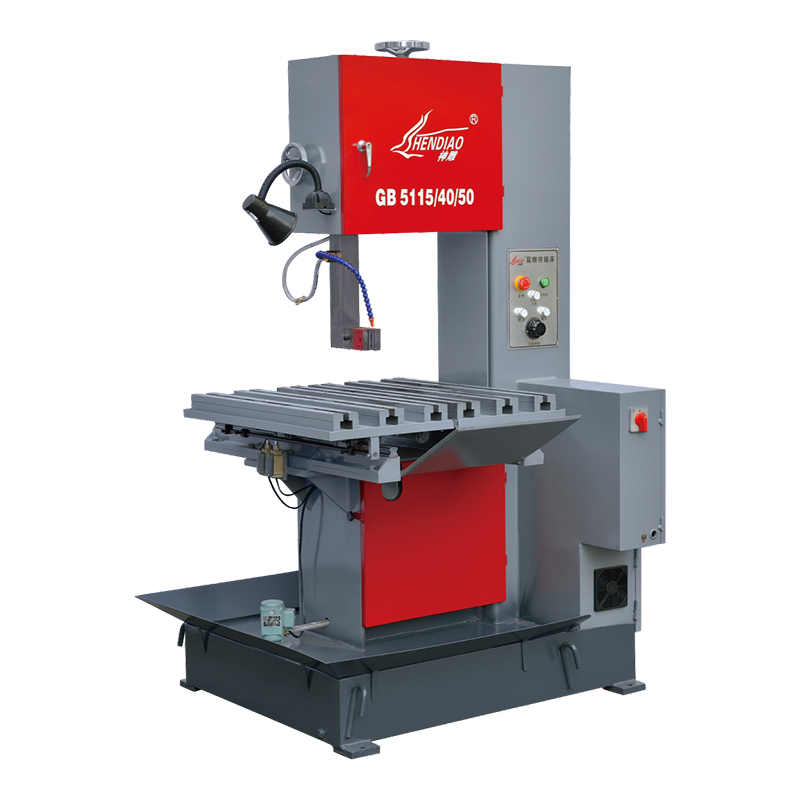GZ1515/170G Automatic Hydraulic Feed Sawing Aluminum Plate Circular Saw
Cat:Circular Saw
Suitable for cutting aluminum alloy plate, high efficiency (3 times of...
See DetailsFundamentals of Cutting Precision in Vertical Metal Cutting Band Saw Machine
Cutting accuracy is a critical performance metric for a Vertical Metal Cutting Band Saw Machine, directly influencing product quality and machining efficiency. Ensuring precise cuts involves a combination of machine design, material handling, blade quality, and operational parameters. Understanding how these factors interplay helps manufacturers achieve consistent, accurate metal cutting results.

Robust Machine Frame and Structural Stability
The foundation for cutting precision starts with a rigid and well-engineered machine frame. A sturdy frame reduces vibrations and deflections during operation, which could otherwise cause inaccuracies or uneven cuts. Vertical Metal Cutting Band Saw Machines with reinforced steel construction and optimized structural design provide enhanced stability, ensuring the blade maintains a consistent cutting path.
Precision Blade Guide and Tensioning Systems
Accurate blade guidance is essential to maintain the cutting line. Modern Vertical Metal Cutting Band Saw Machines utilize adjustable blade guides positioned close to the cutting zone, supporting the blade and preventing lateral movement. Coupled with an effective blade tensioning mechanism, these features help maintain blade straightness and reduce blade wandering, thereby improving cut precision.
High-Quality Saw Blades and Tooth Geometry
The choice of saw blade significantly impacts cutting accuracy. Blades with consistent tooth geometry, appropriate tooth pitch, and proper hardness are less prone to deflection and wear, which can degrade cut quality. Using blades specifically designed for the metal type and thickness being cut also helps maintain smooth and accurate cuts throughout the operation.
Accurate Material Clamping and Fixturing
Proper securing of the workpiece is crucial to prevent movement during cutting. Vertical Metal Cutting Band Saw Machines are often equipped with precision clamps or vises that firmly hold the metal in place. Adjustable fixturing ensures that the material remains stable and aligned with the blade, reducing the risk of cut deviation caused by shifting or vibration.
Controlled Feed Rate and Cutting Speed
Optimizing the feed rate and blade speed to match the material properties and thickness is vital for precision. Excessive feed rates can cause blade deflection and rough cuts, while too slow speeds may cause overheating and blade damage. Many Vertical Metal Cutting Band Saw Machines feature variable speed controls and programmable feed mechanisms to fine-tune cutting parameters, improving consistency and accuracy.
Regular Maintenance and Calibration
Maintaining the Vertical Metal Cutting Band Saw Machine in good condition is essential to preserve cutting precision. Routine inspection of blade condition, guide alignment, tension settings, and clamping mechanisms ensures the machine operates within its designed tolerances. Periodic calibration of components also helps detect and correct any deviations before they affect cutting quality.
Integration of Digital Controls and Automation
Advanced Vertical Metal Cutting Band Saw Machines often incorporate CNC or digital control systems, enabling precise control over cutting angles, feed rates, and blade speed. Automation reduces human error and allows for repeatable, highly accurate cuts, especially in complex or high-volume production environments. Such technology also facilitates quick adjustments and consistent quality across multiple workpieces.
Conclusion: Achieving Consistent Cutting Accuracy with Vertical Metal Cutting Band Saw Machine
In summary, its cutting precision is ensured through a combination of structural stability, precise blade guidance, quality blades, secure workpiece clamping, optimized cutting parameters, regular maintenance, and, where applicable, digital control systems. By addressing each of these factors, manufacturers can achieve reliable, accurate metal cuts that meet stringent industrial standards and improve overall productivity.